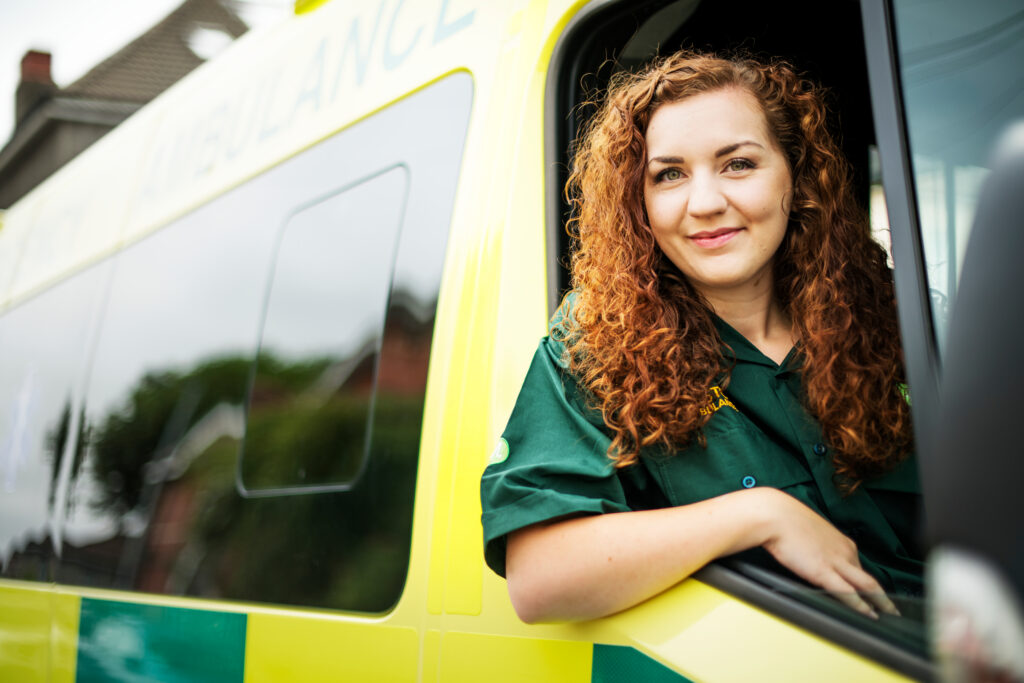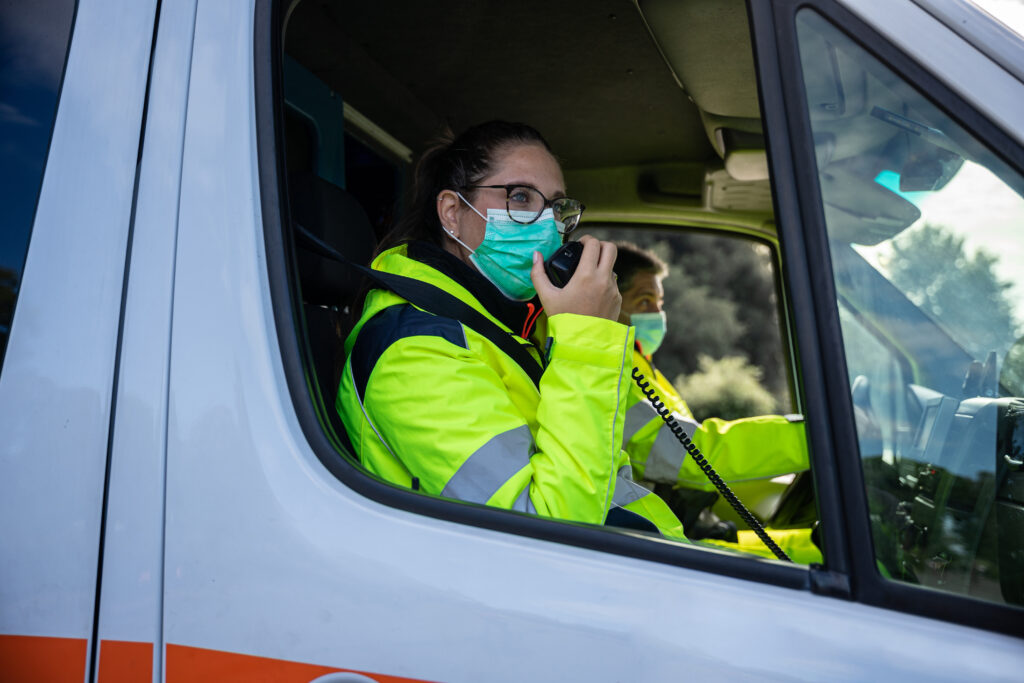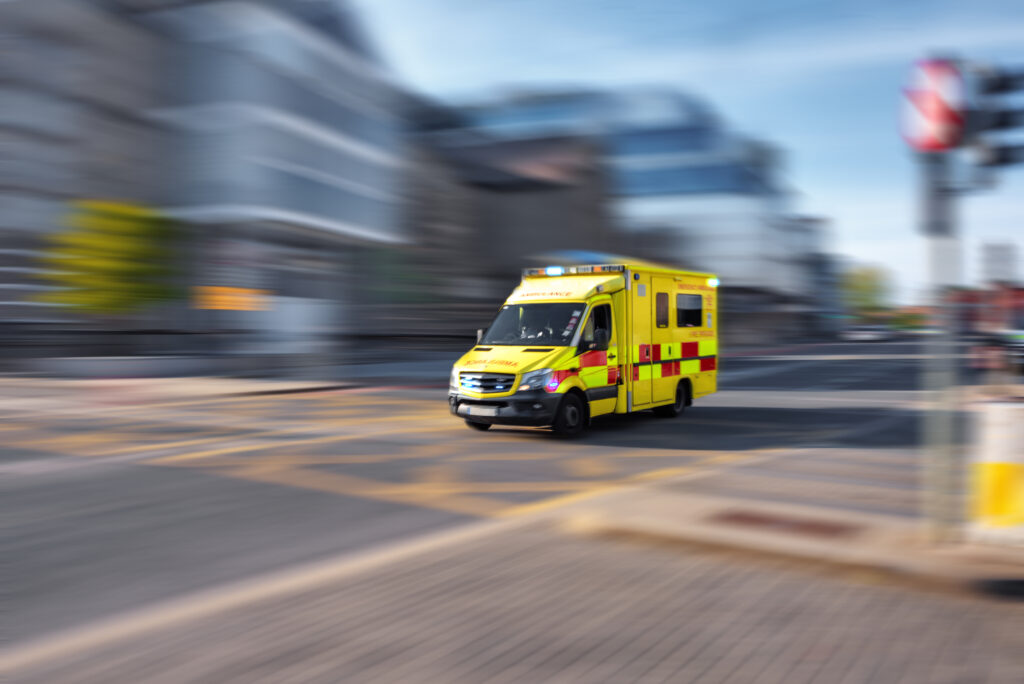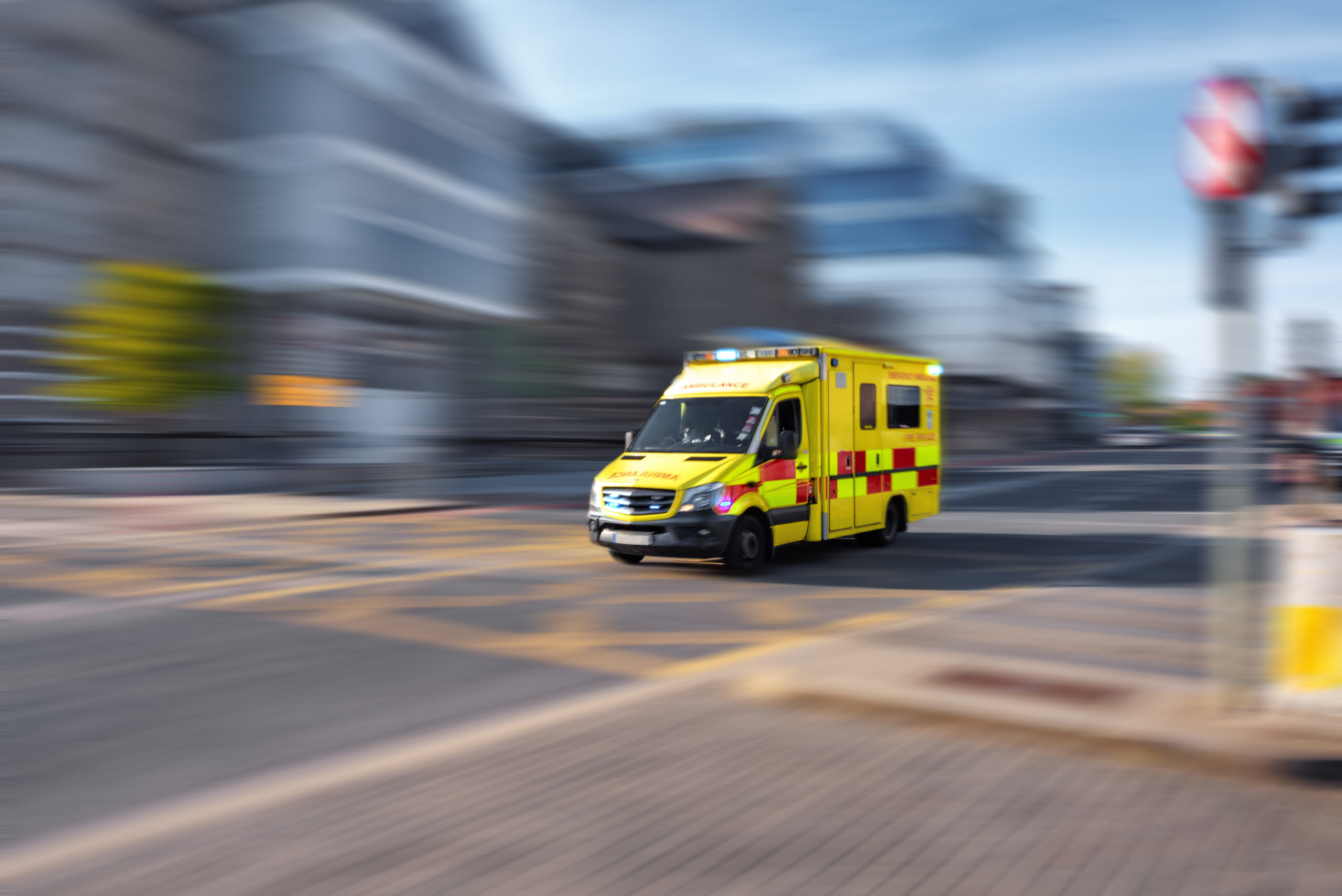Table of Contents
Switching to a career in the emergency services and dedicating your time to saving lives could be the rewarding role you’ve been craving. Plus, with shift work patterns and attractive financial incentives, ambulance driving could be the perfect profession for you.
So, if you’re itching to find out more about how to become an ambulance driver, we explain all there is to know – from the qualifications required to your potential earnings.
Keep reading to hear more from our experts here at HGV Training Network!

What qualifications do you need to be an ambulance driver?
Typically, ambulance drivers are medically trained emergency responders with an additional specialist driving qualification, known as a C1 category (Cat C1) licence.
To consider this profession, you’ll need to be either:
- A paramedic – the most highly qualified and senior members of ambulance teams, paramedics oversee emergency medical technicians and can treat the most serious injuries/wounds.
They may also drive an ambulance, however, so they can focus on providing life-saving care this role is often delegated to another member of the ambulance crew. - An emergency medical technician – supports a paramedic as part of a two-person crew. EMTs are entry-level medical professionals who can drive the ambulance and offer life-saving care.
- An emergency care assistant – offers patient care and treats wounds or fractures and may also drive patient transport service vehicles, also called non-emergency ambulances.
- An ambulance care assistant – also known as an ambulance care driver, this role involves driving patients to and from hospital appointments and helping them in and out of the vehicle.
In addition to responding to a medical emergency, ambulance drivers must hold a C1 category driving licence to legally drive most ambulances. However, this may vary depending on the ambulance service you’re employed by.
A C1 licence ensures you’ve gained all the practical driving skills needed to drive an ambulance vehicle quickly and safely and know how to operate a slightly larger vehicle.
You’ll also need to earn your Driver Certificate of Professional Competence (CPC qualification), which can be completed alongside your ambulance driver training.

How much does an ambulance driver make?
Annual salaries for ambulance drivers depend on various factors such as location, experience, and additional job roles, which may result in much higher wages.
The NHS operates a band pay system, which includes the various job roles mentioned above.
- Ambulance care assistants start on band 2 or 3 and typically earn between £23,000 and £25,674.
- Emergency care assistants typically earn a band 3 salary, up to £25,674.
- Emergency medical technicians are usually paid at band 4, earning between £26,530 and £29,114.
- A paramedic will usually earn the most and are paid at band 5 initially (£29,970 – £36,483), which can often progress to band 6 after two years (£37,338 – £44,962).
Private hospital salaries may differ.
Did you know – with the HGV Training Network, you can earn your C1 licence at one of over 50 state-of-the-art training centres across the UK? Call our team today on 0203 869 9001 to get the process started.

How long does it take to be an ambulance driver?
To drive an ambulance for a living, you’ll have to complete the relevant educational and medical training, as well as additional ambulance driver training to earn your C1 licence.
Medical/educational training
- For the higher qualification roles such as a paramedic, it can take between 3-5 years to complete the necessary Paramedic Science undergraduate course.
- An emergency medical technician level 4 apprenticeship can take up to 18 months to complete.
- It takes 6-9 weeks of initial training to qualify as an emergency care assistant.
- An ambulance care assistant training course usually takes up to 3 weeks to complete.
C1 driver training
As mentioned, to legally drive ambulances, you’ll need to obtain your C1 licence – this qualification permits you to drive vehicles weighing between 3.5 and 7.5 tonnes.
You can add this qualification to your standard car licence by undergoing specific ambulance driver training provided by an established LGV or HGV training company.
This training course should take 6-8 weeks to complete.
Want to know more about our range of HGV training courses here at HGV Training Network? Contact us today and we’ll be in touch!V, which we’ll explore more shortly. your training, fill in our contact form or call us on 0800 254 5007.

What’s involved in C1 driver training?
Firstly, you’ll need to revise for and pass a theory test consisting of 100 multiple-choice questions and a hazard perception test, which evaluates your knowledge of the road.
Then, you’ll need to complete practical training, just like a standard driving test.
Your practical training will teach you the essential emergency driving techniques required to pass your practical test including abilities such as:
- Using ambulance controls
- Emergency response driving
- Defensive driving, such as steering through traffic
- Effective communication and route planning
- Reversing in a larger vehicle
- Hazard perception and awareness
Finally, as mentioned earlier, CPC training is also required as part of the qualification to confirm your understanding of safe vehicle handling.
Earn your C1 licence with HGV Training Network
Interested in a career in ambulance driving? Is helping and caring for people in their time of need your dream role? If so, we can provide you with expert ambulance driver training – our experienced instructors have real-life experience in the field and know exactly how to help you earn your C1 licence.
To kickstart the application process, complete our contact form or call our team today on 0203 869 9001 and they’ll explain the full process from start to finish.e our online contact form, and we’ll be in touch.








